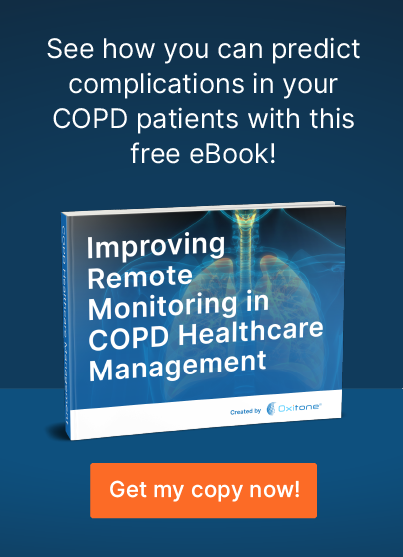Patients with severe chronic and complex conditions pose a unique challenge for the efficiency and effectiveness of today’s healthcare system.
These patients typically require always-on attention from doctors, nurses, and others to address the difficulties of chronic disease management. Historically speaking, researchers have estimated that 20% of severe chronic disease patients consume 80% of healthcare resources—though that ratio could be changing.
Doctors must keep track of the details impacting their patients’ conditions and in a way that does not require their constant attention and frequent check-ins. Traditional monitoring systems have proven inadequate for most high-risk patients. The data that these produce is of varying quality and delivered unreliably, introducing imprecision that patients cannot afford.
The problem calls for a new approach, and technology is rising to the challenge. New body-worn medical devices provide continuous remote patient monitoring (CRPM), delivering accurate, real-time data for clear-eyed decision-making without disrupting clinical workflows.
The information provided by CRPM helps improve clinical outcomes in other ways. For example, the data can motivate patients to become more involved with their care. Digital patient engagement improvement data shows that more involved patients mean better medical results.
What Is Continuous Remote Patient Monitoring?
The digital technology revolution long ago recognized health care as a prime target, as shown by the development of small, affordable devices like glucometers, thermometers, and blood-pressure monitors. But these devices typically provide an answer to a single question in the moment: “Do I have a temperature? Is my blood pressure too high? Do I need to lower my blood sugar?”
CRPM represents the next phase of the digital health care revolution. The idea is to deliver continuous streams of physiological data to doctors caring for patients with chronic health care conditions.
The continued shrinking of microelectronics has opened the door to developing easy-to-use, connected, wearable devices that can capture this data and feed it over the network so doctors can monitor, review, or intervene as needed. The continuous nature of these devices helps doctors target their limited time and resources where they are needed most.
One condition showing the most promise for CRPM is COPD, where patients are subject to hospital readmissions at a high rate. Several devices now on the market can capture the variables of the condition to suggest treatment management.
Benefits of Digital Patient Engagement Improvement Data
It is well-established that people who take a vested interest in their healthcare fare better than those who do not. The phenomenon of the “quantified self,” which involved the development of affordable, easy-to-wear trackers, has prompted people to begin paying closer attention to the trackable aspects of their lives (such as how many steps they take each day). The information provided by these trackers enables people to see results in real time, which breeds more success.
CRPM builds on that concept by making data a regular part of routine health care for those with severe chronic conditions through medical-grade devices that are easy and comfortable to wear. In addition to informing doctors, digital patient engagement improvement data suggests that a secondary benefit is motivating patients to be more active in their own care.
CRPM has also taken a giant step toward mainstream adoption in the context of the COVID-19 pandemic. The Centers for Medicare & Medicaid Services announced at the onset of the pandemic that they would provide greater regulatory flexibility to allow patients with chronic conditions to be treated at home.
How Oxitone Delivers Better Care through Engagement
The move toward CRPM has also accelerated through innovations from companies such as Oxitone. Oxitone has developed an FDA-cleared wearable medical device that provides CRPM capabilities for patients with severe chronic conditions.
Patients wear the Oxitone 1000M wrist pulse oximeter and physiological monitor on their wrist, and it feeds physiological data to doctors in real time, including:
- Blood oxygen levels
- Pulse rate
- Heart rate variability, an indicator of physiological stress
- Level of activity
- Skin temperature
- Respiratory rate
Use cases where the 1000M offers the biggest impact include patients suffering from sleep apnea, cardiopulmonary disorders, or physiological stress.
The device is highly accurate and comfortable to wear. It gives peace of mind to those with severe chronic conditions because they know that their healthcare team is watching out for them by receiving diagnostic quality data for quick decisions.
The 1000M also provides a conduit to better health by delivering digital patient engagement improvement data for actionable behavioral changes.
The Future of Healthcare
The CRPM offered by Oxitone provides significant benefits for patients and providers. These include a reduction in costs, added peace of mind, reduced hospital stays, and overall better health outcomes—a pathway to value-based healthcare.
Here at Oxitone, we boost value-based healthcare by delivering extraordinary patient, clinical, and economical outcomes at reduced medical utilization and cost. Patients need a prompt response to emergencies. Physicians need an easy and timely follow-up with patients. Our mission is to transform chronic disease management and help save lives worldwide.
Let’s save lives together! To see how we help remote patient monitoring companies and physicians improve the management and care of high-risk patients, contact us today!


